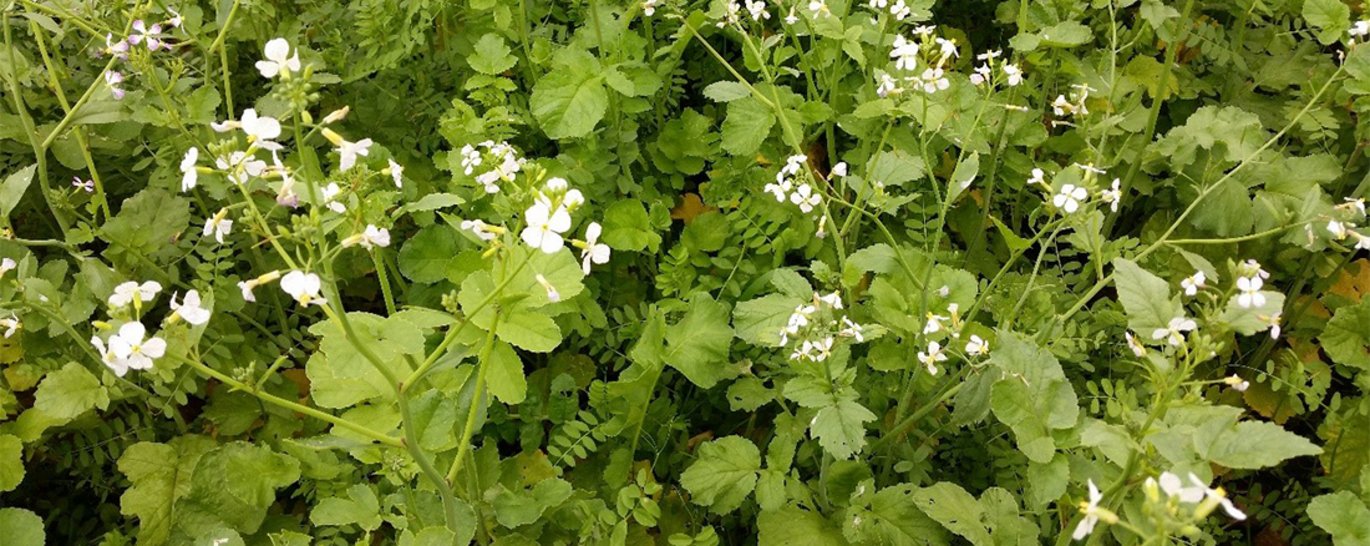The benefits of crop diversification for weed management
In organic cropping systems, weed proliferation is one of the major factors hindering crop yield. The PRODIVA project developed five general rules that farmers can implement to help alleviate this problem.

Weed proliferation is one of the major factors hindering crop yield in organic cropping systems. It is therefore important to look for new weed management solutions.
The PRODIVA (Crop diversification and weeds) project sought to address this problem by asking whether crop diversification could serve as a potential solution. According to the project results, the answer is yes and there are five general rules that can help to achieve this:
Rule #1: Increase diversity
There are three main factors to take into account when diversifying cropping systems: the season in which the crop is established (e.g., spring or autumn), the sowing time (e.g., early spring vs. late spring) and the crop species composition (e.g., annual or perennial, legume or non-legume green manure crops, and cover crops).
Ensuring a high diversity in crop sequences is an important tool to mitigate weed proliferation in organic cropping systems. Generally speaking, the more crop diversity, the better, but mixing annual and perennial crops and sowing times, as well as adding cover crops is a good starting point when planning cropping systems.
Rule #2: At least 20% nitrogen-fixating perennial crops suitable for mowing in crop rotations
The inclusion of these perennial crops creates conditions to suppress the growth of detrimental weed species. For example, a long-term field trial in Denmark found that nitrogen-fixating grass and legume green manure crops that are mown several times a year had fewer perennial weeds than those without the green manure crops (see figure 1).
Rule #3: Room for mechanical control of Elytrigia repens
Elytrigia repens, also known as common couch or couch grass is a particularly difficult weed problem in Europe, and cannot be managed solely by crop diversification and nitrogen-fixating perennial crops. It is therefore important for farmers to make sure there is room for mechanical control of this weed.
Rule #4: Clean row crops
Weedy row crops are a source of weed pollution. Whenever there is a row crop in the rotation, it is important to keep it free of weeds. In addition to machinery-based solutions, supplementary hand weeding may be necessary.
Rule #5: Crop competitiveness
Whenever possible, look for crops that are highly competitive against weeds. For example, if you are in doubt about whether to sow oat or spring barley, the oat crop is the better choice in terms of competition against weeds. The same also applies to winter crops – winter rye, for example, suppresses weed growth more than winter wheat.
According to the PRODIVA project coordinator, Bo Melander, if you stick to these five basic principles, you should have a system that disrupts the proliferation of detrimental weeds.
The project also tested the impact of spring cereal variety mixtures or crop species mixtures but found that these mixtures did not consistently reduce weed growth. While variety and crop mixtures did show some positive results, they were largely inconsistent and depended on several biotic and abiotic factors, which are difficult to predict.
Instead, following the five rules outlined above is a good starting point to manage weeds in organic cropping systems.
 Figure 1: Response of perennial weeds (Cirsium arvense and Sonchus arvensis) to crop diversification. Source: long-term experiments in Foulum, Denmark
Figure 1: Response of perennial weeds (Cirsium arvense and Sonchus arvensis) to crop diversification. Source: long-term experiments in Foulum, Denmark
For more information, please contact project coordinator
Bo Melander,
Department of Agroecology - Crop Health, Aarhus University
Mail: bo.melander@agro.au.dk